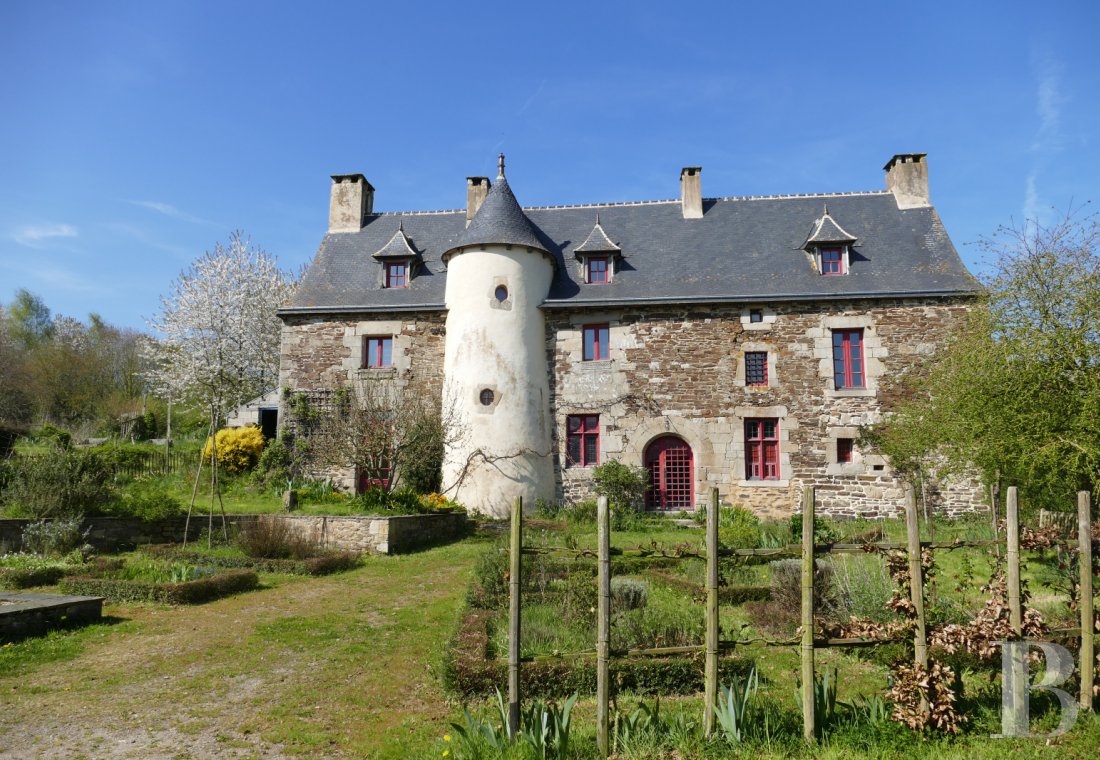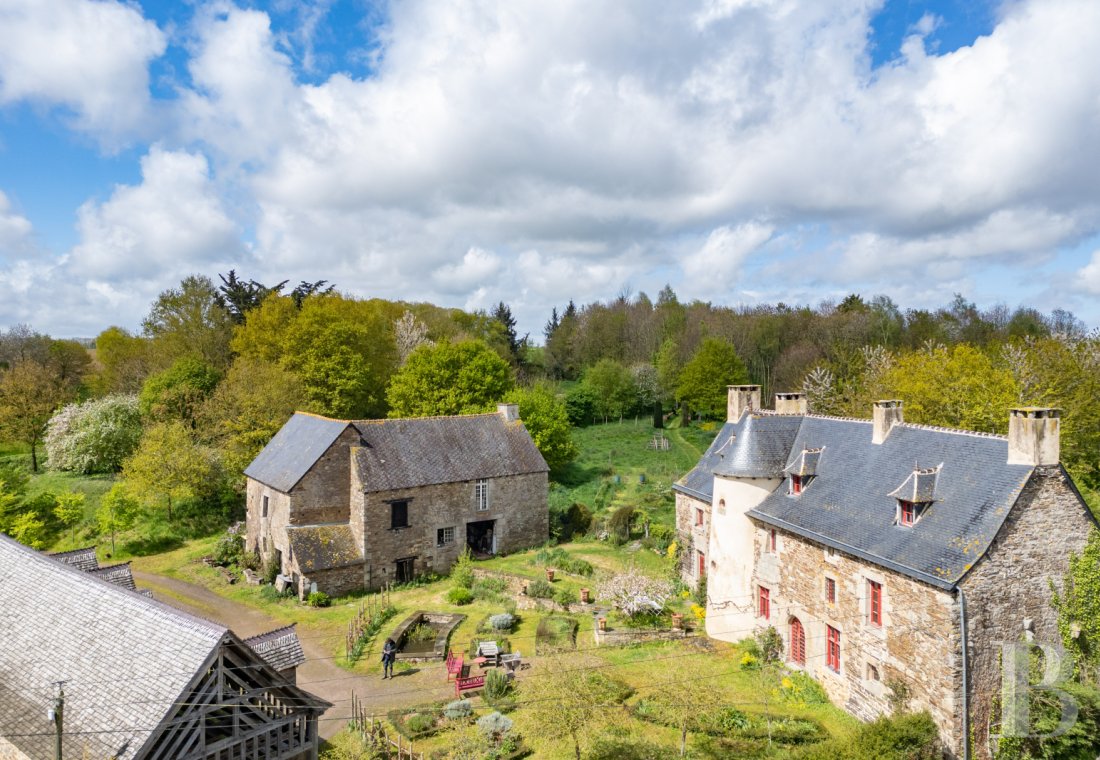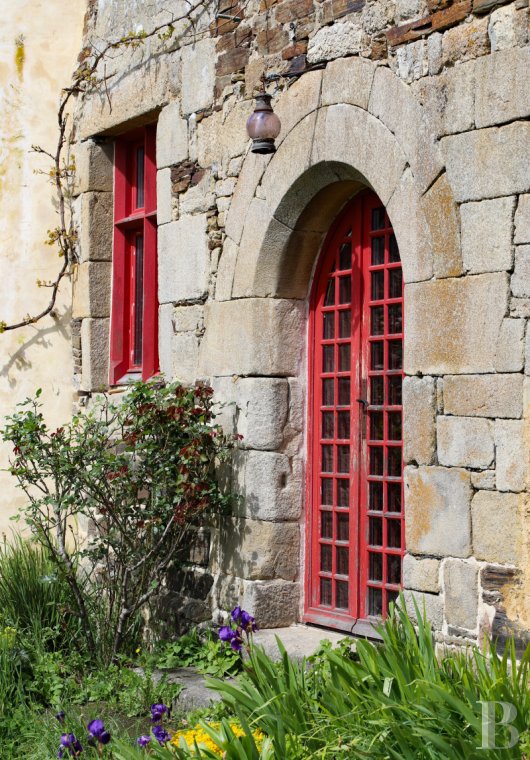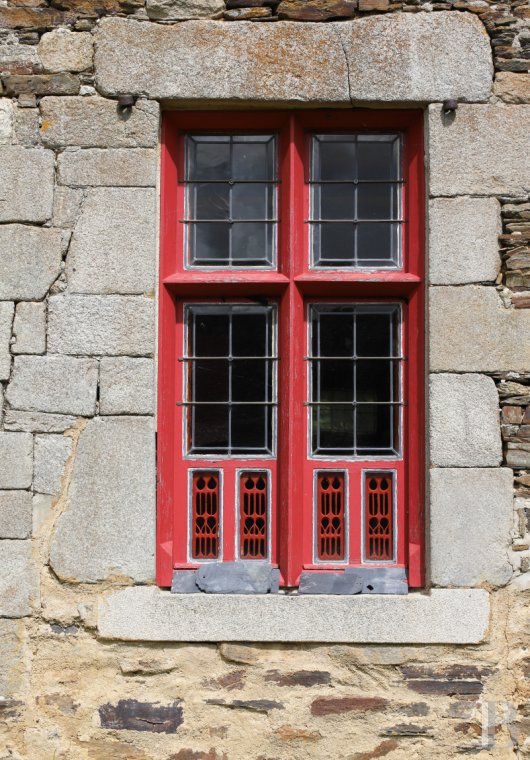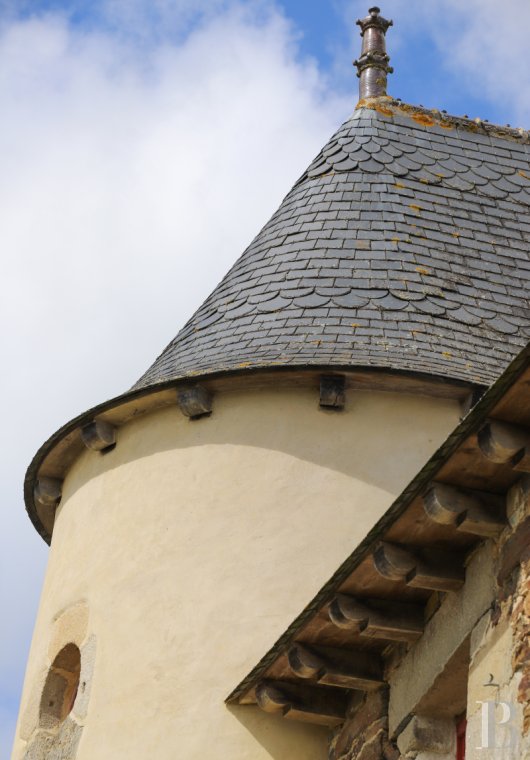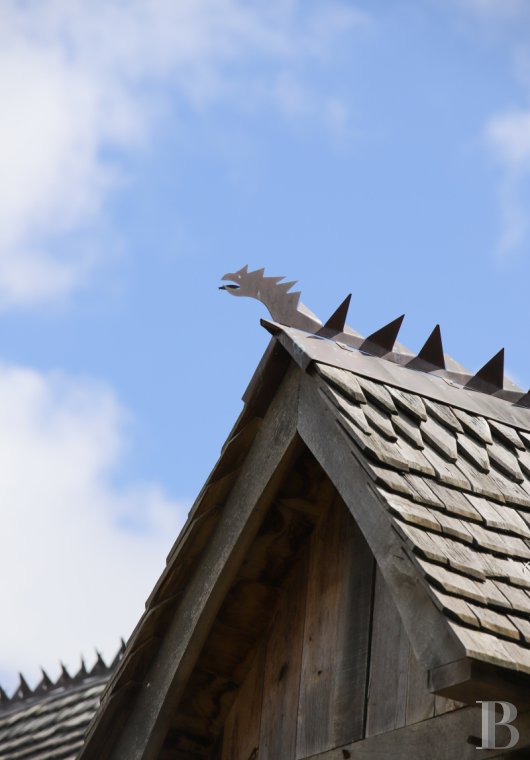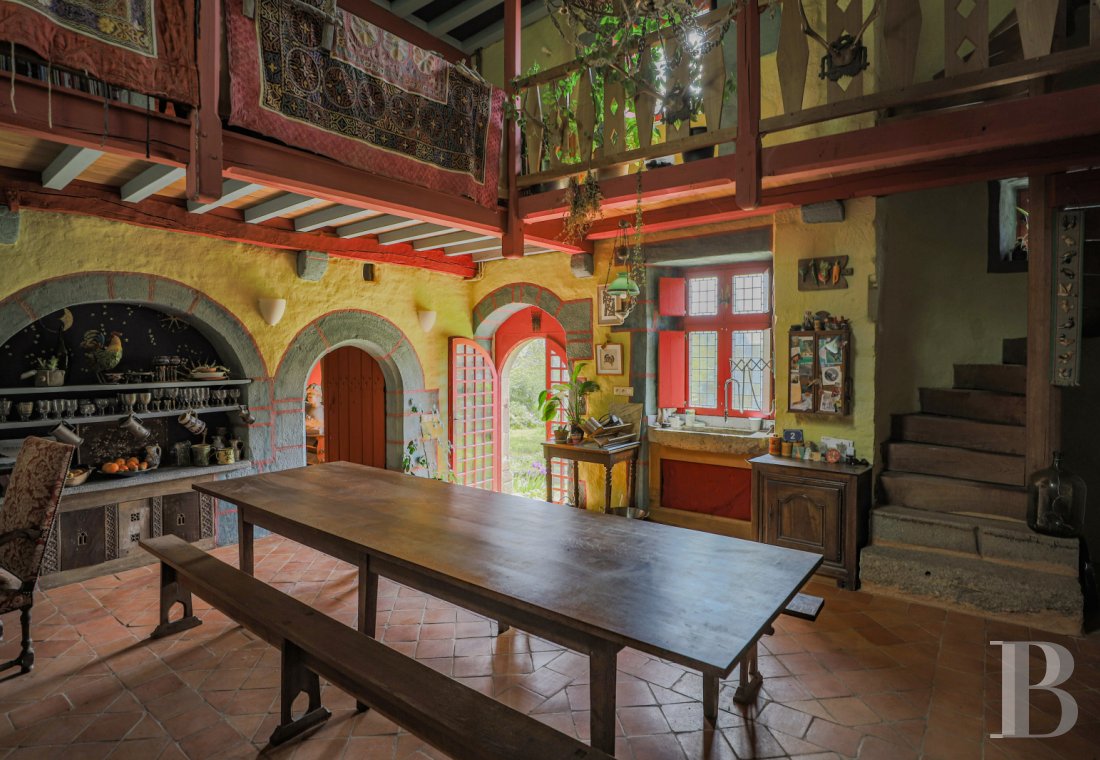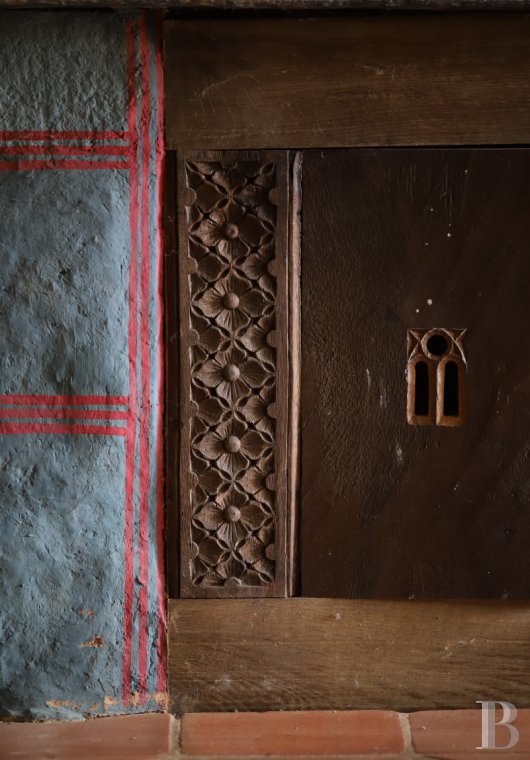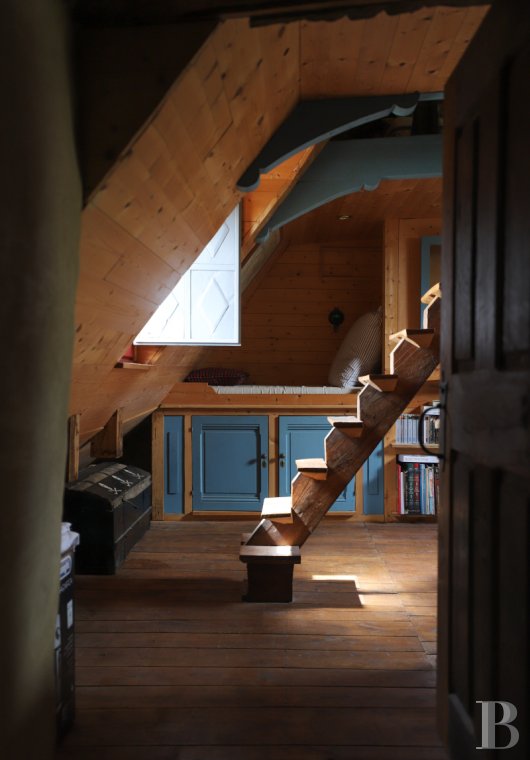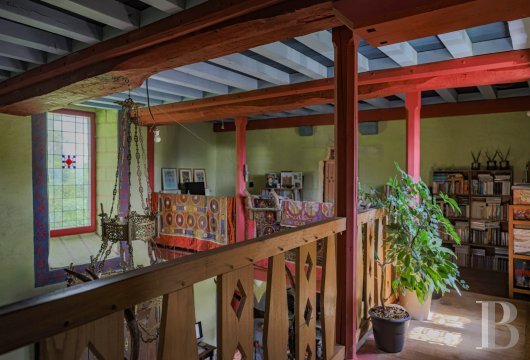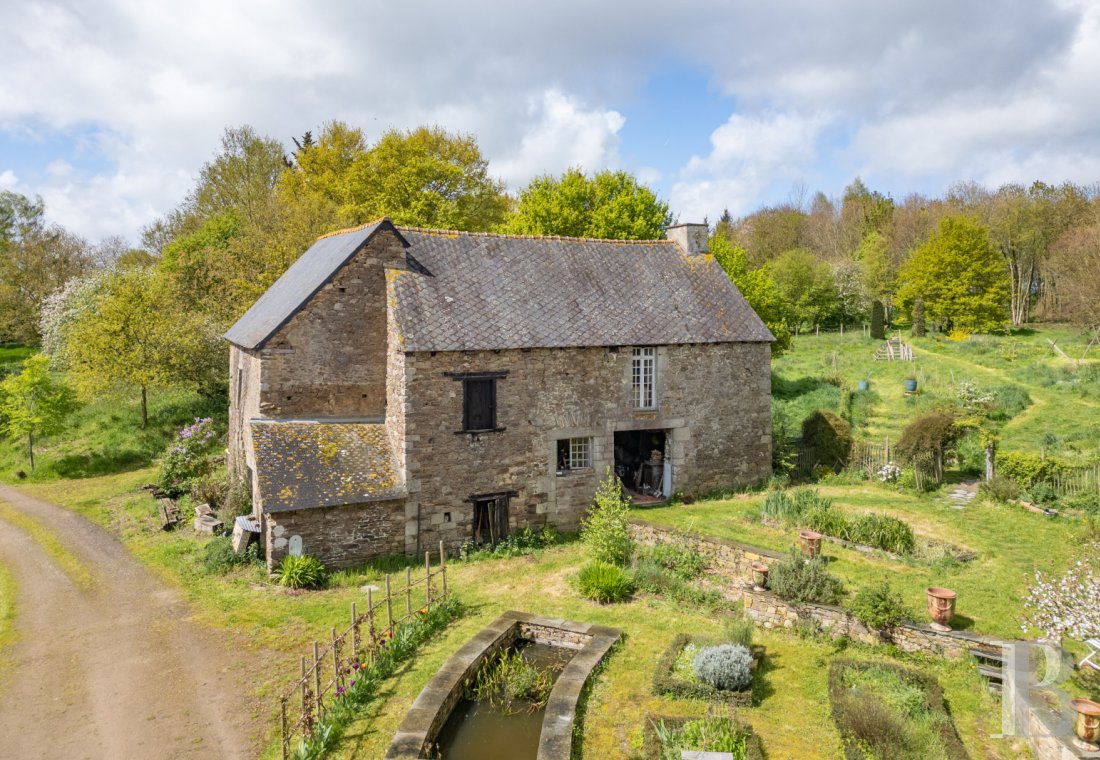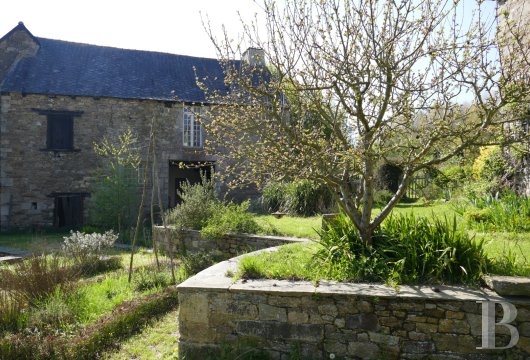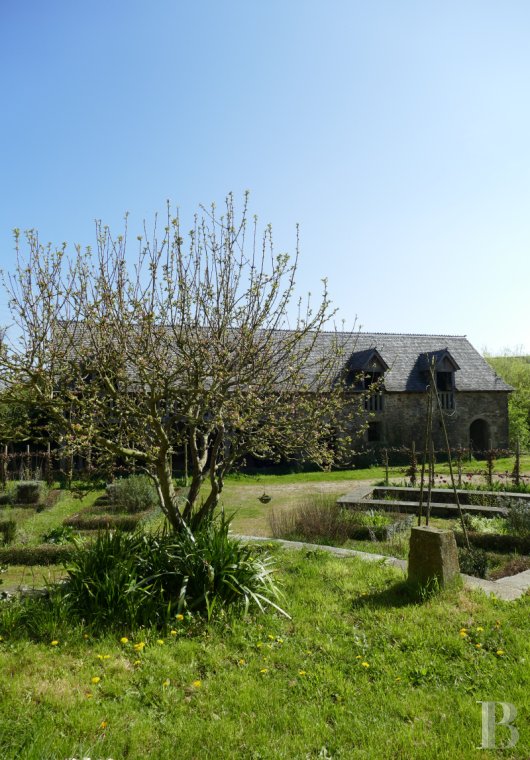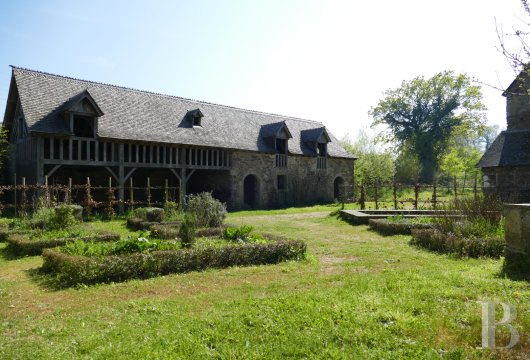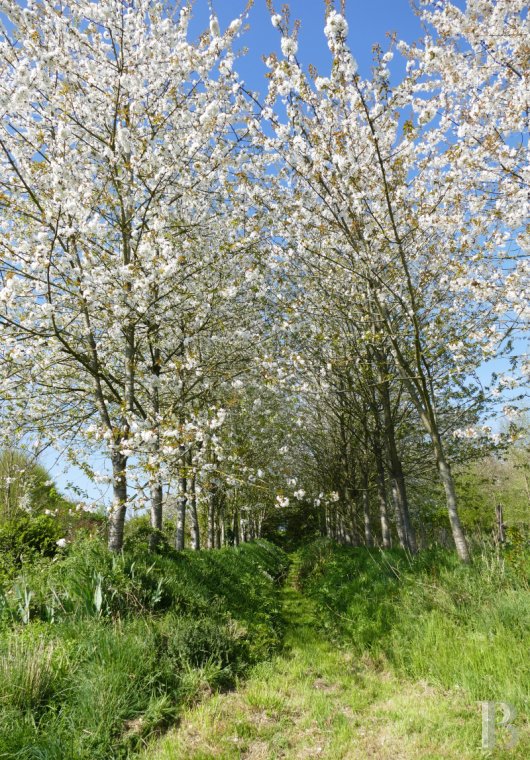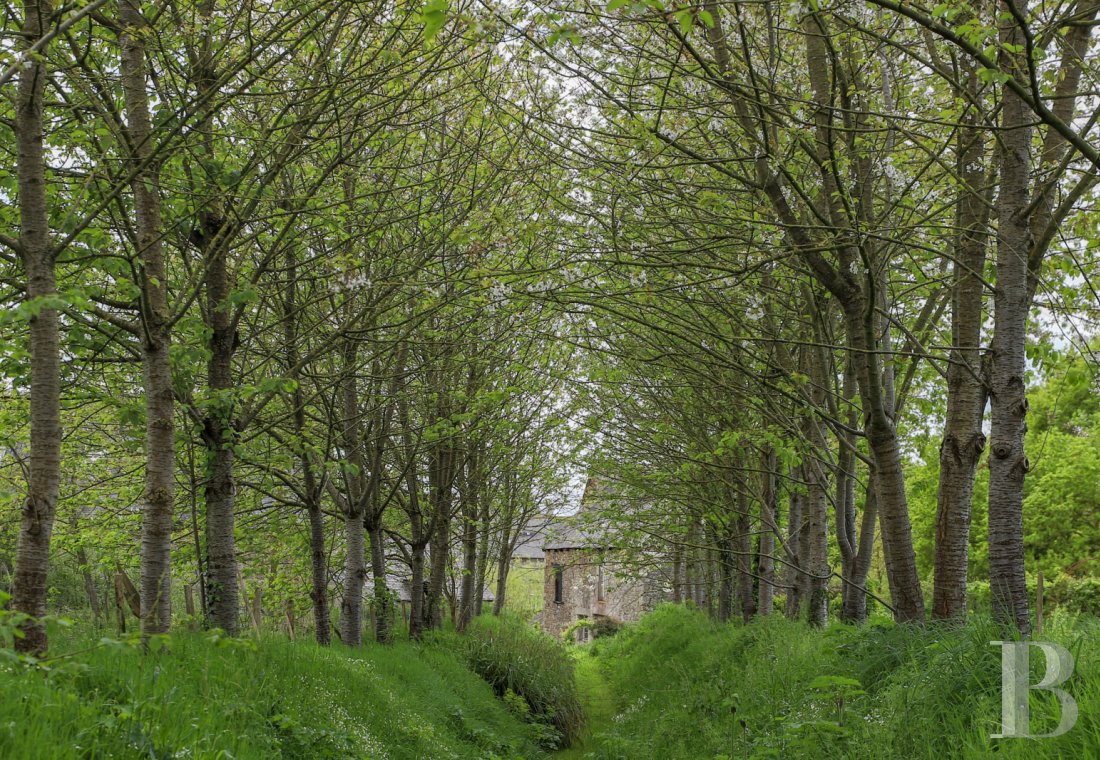Location
The property lies in France’s Côtes d’Armor department, in an area that links the cities of Rennes and Saint-Brieuc. It is tucked away between the towns of Dinan and Lamballe, nestled close to the characterful village of Jugon-les-Lacs, which is known for outdoor pursuits in the countryside around it. The town of Lamballe is around 15 minutes away by car. This town is known for its stud farm and its art museum: Musée Mathurin-Méheut. Lamballe is a vibrant town that offers many shops and amenities. From Lamballe’s high-speed train station, you can reach Rennes in 40 minutes and Paris in 2 hours and 30 minutes by rail. And with smaller train stations nearby, you can enjoy outings that combine cycling with short rail trips. The city of Saint-Brieuc is 20 minutes away, the city of Rennes is 45 minutes away and the delightful beaches of Pléneuf-Val-André, Erquy and Saint-Jacut-de-la-Mer are only 30 minutes from the property.
Description
The manor
The manor offers a floor area of around 180m². The edifice is made of rubble granite and schist in a long form with three rooms per level. The facade features a half-protruding round tower that houses a staircase. This tower is lime-rendered. A slate gable roof crowns the manor. The rounded roof of the tower alternates rectangular slate tiles with strips of scale-shaped slate tiles. The main roof is punctuated with dormers. Both the tower roof and the dormers are crowned with terracotta finials. There are two doors in the facade. One is set in a semicircular arch. The windows in the facade are of different sizes and some feature stained glass. Two bull’s-eye windows fill the staircase tower with natural light. The manor’s interior is adorned with exposed beams, a monumental fireplace, terracotta floor tiles and lime-plastered walls.
The ground floor
The main entrance door, set in a semicircular archway, leads into an extensive space known as the lower hall. This room is typically medieval. A monumental fireplace houses a range cooker from the firm Godin. This impressive range cooker uses gas, electricity and wood. The wood-fired section is linked to the central heating network and can warm up the entire house, either as a substitute or a complement for the heating oil boiler, which heats up the home’s water. This dining room, which was once a hall of justice, has a Gothic style and it is filled with natural light. It is spacious and has a ceiling height of 5.5 metres. In the upstairs bedroom above it, there is a peephole for eavesdropping on conversations down here. Underfloor heating covered with terracotta tiles improves the home’s thermal inertia. The exposed beams and joists that run across the ceiling are painted. The walls are lime-plastered and the door surrounds and crockery alcove are made of granite. They feature paintwork inspired by 16th-century decor and colour schemes. On both sides of the room, there are windows, some of which have stained glass. They are fitted with indoor wooden shutters and they offer views of the court and the medieval garden. Two vaulted doorways and a few steps lead down to an adjoining lounge: a spacious room decorated in pastel tones with a floor of terracotta tiles and a ceiling of painted timber beams and barrel vaults of boards. Two stained-glass windows, one tall and the other small, are fitted with indoor shutters with openwork. On the other side of the large hall, an arched doorway leads to a tiled, lime-plastered kitchen with a granite fireplace. The kitchen leads straight outside to a terrace via a glazed door with small panes. On one side of the house, there is a lean-to that you can only reach from outside. It houses a boiler room and a storage space.
The first floor
A solid-oak spiral staircase – an exact replica of the original 17th-century staircase that stood here – leads up to a landing. This landing connects to a south-facing bedroom via an arched doorway flanked with two alcove seats. The floor is carpeted, exposed beams and joists run across the ceiling and the walls are lime-plastered. The landing also connects to a mezzanine gallery that looks down at the lower hall. This gallery has wood strip flooring and timber balustrades. The walls are lime-plastered. The beams, joists and ceiling are painted. Stained-glass windows bring in soft natural light and underline the house’s historical charm. The mezzanine gallery, which could be used as a lounge or office, leads to a bedroom with a bathroom. This bedroom was originally the master bedroom of the seigneur. It has a peephole for eavesdropping on conversations in the lower hall. Wood strip flooring extends across the bedroom, which has a ceiling height of over 3.3 metres. The exposed beams and joists that run across its ceiling are painted decoratively. Three south-facing windows bring in natural light, which showcases the pale tone of the lime plastering. A fireplace stands against one wall. A bathroom with a bath adjoins the bedroom. The biggest window has an alcove of stone window seats and painted floor tiles.
The second floor
The spiral staircase leads up to the second floor. A corridor runs along this level. On one side, this corridor connects to a bedroom designed like a sailor’s cabin. It has a lounge space and a mezzanine that a flight of stairs leads up to. The maritime spirit here stands out in wooden wall boards, in-built brass ceiling lights, painted wooden cupboards and sleeping berths. On the other side, the corridor connects to two rooms with the same style, each with a lounge space below and a mezzanine for sleeping above. A shower room and a fourth bedroom that is more traditional, with wood strip flooring, complete this second floor.
The old dwelling known as the chaplain’s house
As its name suggests, this outbuilding once housed a priest, back in the 18th century. The former dwelling needs to be entirely renovated. Its form is similar to that of the manor, though its L shape is the result of a manorial kitchen being added in the 17th century. This kitchen adjoined a small medieval dwelling. Indeed, this explains why the house’s two sections do not connect to each other, except via the loft. On the ground floor of the kitchen section, there are two wood-fired ovens that are still in working order: a huge two-metre bread oven and a smaller 1.3-metre oven for meat. A large fireplace bearing coats of arms stands against a wall. The building has not been restored. There were gites inside it up to the year 2000.
The house with a barn
This outbuilding stands opposite the manor. It was restored around five years ago. After the 17th century, it no longer served as a guard’s dwelling and it was turned into an agricultural building. The only traces of its former purpose are a guard stone and the start of a carriage entrance arch in the long south wall, as well as a cart driveway leading to the manor that is dug into the rock here. Based on these remains and on chestnut boards from the 16th and 17th centuries that were discovered in the loft, a restoration project was carried out with the timber covering, the Gothic windows and the local-style curved roof frame typical of the 14th and 16th centuries.
The grounds
The grounds have been widely redeveloped: a medieval garden has been created in the manor’s court and different spaces – some ornamental and others functional – have been made to the north and west of the manor over an area covering more than one hectare. The whole estate includes pastureland, woods, embankments and sunken lanes. Vegetable patches and orchards now make the estate virtually self-sufficient for food. The orchards include cherry trees, pear trees, apple trees, plum trees, a fig tree, a peach tree, a nectarine tree, a kaki persimmon and a chocolate vine. There are also blackcurrant bushes, medlars, raspberry bushes, currant bushes, blueberry bushes and serviceberry bushes. There are enclosed meadows where hens and sheep could be kept. The grounds also include a spring of drinking water. Over the past 20 years, more than 2,000 trees have been planted here, including oaks, wild cherry trees, ashes, beeches and elms, which can be used as firewood or timber. And the linden trees, chestnut trees, sycamores and willows here can be conducive to thriving beehives. Over this same period, no plant protection substance has been used other than those permitted in organic agriculture, such as Bordeaux mixture.
The medieval garden
A garden inspired by the Middle Ages has been created in the manor’s court. It is made up of several areas with espaliered shrubs. The medicinal garden is dotted with clusters of balm, lavender, rosemary, thyme and fennel. A more ornamental section is edged with box hedges and embellished with irises, lilies, carnations and roses. And there is a section for plants used for industrial purposes, for example plants used to make fabrics, dyes and alcoholic drinks. The whole medieval garden is incorporated into a sanitisation system of plant-based purification.
Our opinion
This charming, authentic Breton manor has been masterfully restored. The splendid property is a unique gem. With its emblematic tower, medieval garden and wooded grounds, this remarkable estate is a precious token of life in the Middle Ages. The manor is nestled in a delightful bucolic environment. The quality of its rooms and the potential of its outhouses promise a bright future. The whole property could be self-sufficient like in the past. The manor could be a large family home or an idyllic gite that meets the environmental standards of our era.
Reference 633761
| Land registry surface area | 1 ha 96 a 75 ca |
| Main building floor area | 180 m² |
| Number of bedrooms | 6 |
| Outbuildings floor area | 280 m² |
French Energy Performance Diagnosis
NB: The above information is not only the result of our visit to the property; it is also based on information provided by the current owner. It is by no means comprehensive or strictly accurate especially where surface areas and construction dates are concerned. We cannot, therefore, be held liable for any misrepresentation.


